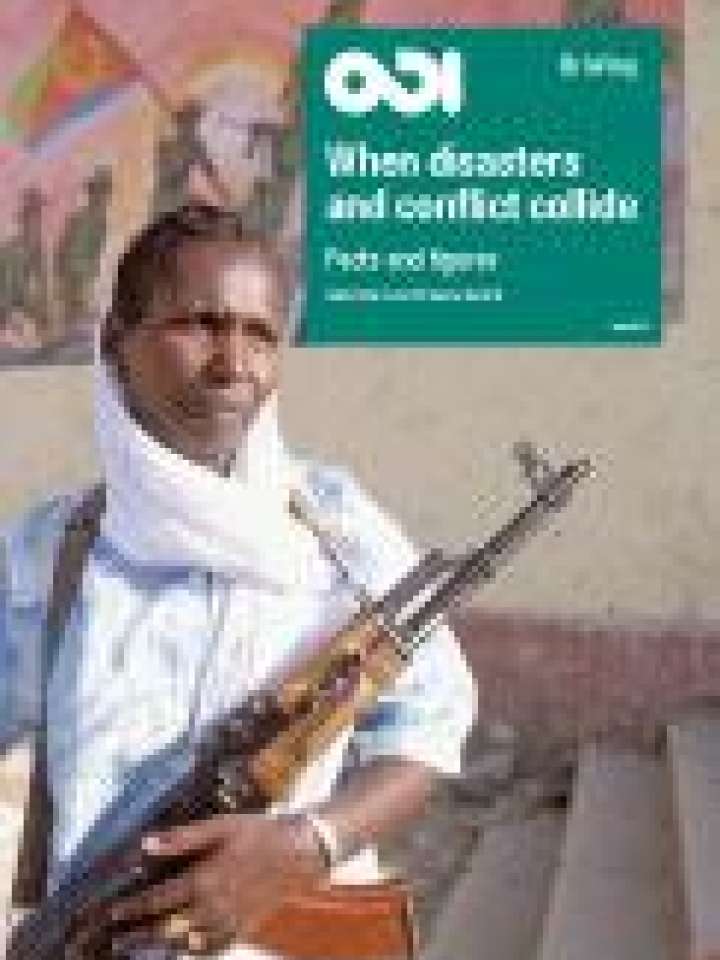When disasters and conflict collide
The international community has a funding blind spot when it comes to Disaster Risk Reduction (DRR) in fragile and conflict affected states, despite these countries having the greatest need. Billions in humanitarian aid spent responding to natural hazard-related disasters (‘disasters’) in these difficult contexts are routinely wiped out by recurrent events. As climate change intensifies risks from natural hazards, DRR – the practice of reducing, preparing for and managing the impacts of disasters – must be made an urgent priority in these countries if the world is to deliver the Sustainable Development Goals (SDGs).
From 2005-2009, more than 50% of people affected by ‘natural’ disasters lived in fragile and conflict-affected states. Recently, a number of high profile disasters in fragile and conflict-affected states have increased attention on the concurrence of disasters and conflict, and there is an expectation that disasters and conflict will coincide more in the future.
This report focuses on the links between conditions of vulnerability and risks associated with the nexus of natural disasters, conflict and fragility. It also recognises that any given context will be mired by an even more complex array of intersecting risks. For example, in 2011, drought, and food and political insecurity in East Africa contributed to a full-scale humanitarian crisis. A combination of natural hazards, conflict and fragility provided a recipe for human suffering.
The evidence base for the ‘natural’ disasters-conflict interface is challenging: it is fragmented and contested, with a number of studies highlighting directly opposing lines of arguments. This suggests that the complexity of conflict and disaster dynamics can only be understood when grounded in specific contexts. Examples are therefore provided in the report from disaster risk reduction in Afghanistan, resilience building in the Sahel region, community based risk reduction in Karamoja and national risk reduction in Nepal.
Explore further
